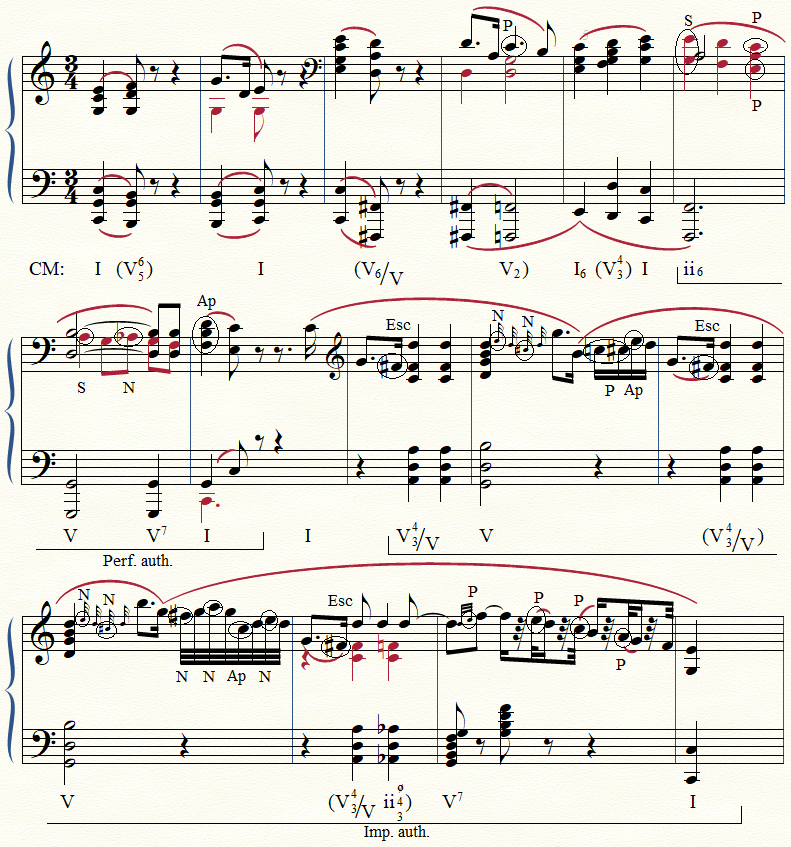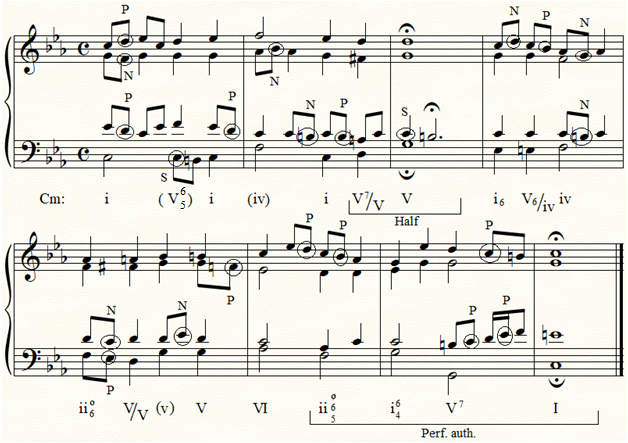
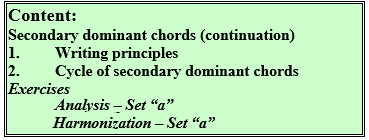
- The following example presents some aspects of resolution, of preparation and the avoidance of false relation. In V65/ii, the preparation and the resolution of the note G (the seventh of the chord) are well written. However, the resolution of C# must go to C natural in order to avoid a false relation. This non resolution is quite normal and good. Let us remember that to avoid a false relation, a note that becomes altered in the previous chord or the chord that follows has to remain in the same voice.
In V2/V, the leading tone is resolved in a normal fashion. However, the seventh (C natural) is not prepared since the note does not appear in the preceding chord.
Finally, the note F in V6 is far enough from the F# that precedes it (two beats) and does not create a false relation.
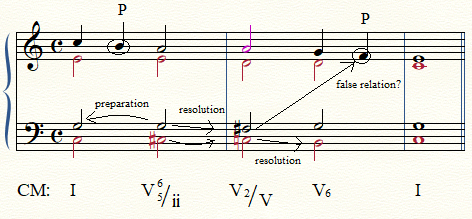
1. Analyze the following excerpt from the music literature:
- Indicate the tonality.
- Write the chord symbols.
- Place the nonfunctional chords between parenthesis.
- Frame and analyze the cadences.
- Circle and identify the nonharmonic tones using abbreviations
2. Tips
Be aware that, except for a few exceptions, the secondary dominant chords are normally chromatic chords. Therefore, they have at least one note that does not belong to the tonality.
The secondary dominant chord is always functional in relation with the chord of resolution. On the other hand, if the resolution chord is nonfunctional, both chord symbols are placed between parenthesis.
At times, the secondary dominant chord can be used as a prolongation of the resolution chord. In this case, it is nonfunctional as for example V – (V7/V) – V.

Excerpt 1
Piano Sonata in E-flat Major, Op. 7 (II) Beethoven
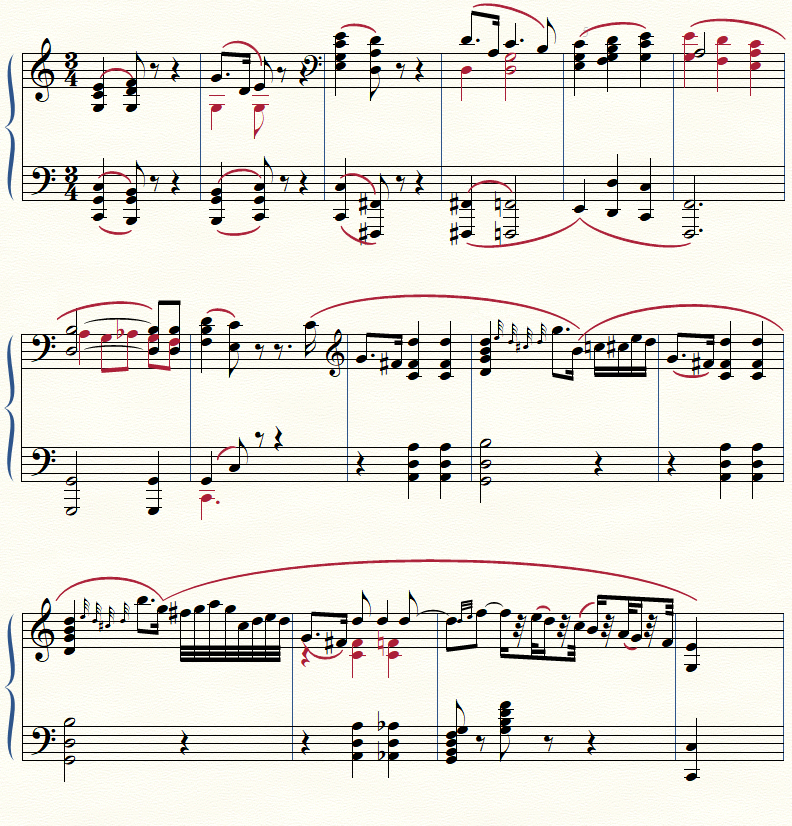

1. Harmonize the following melody.
- Harmonize the following melody in four voices for mixed choir.
- You can use unaccentuated passing tones, descending accented passing tones in short values, unaccentuated neighbouring tones, suspensions, and anticipations.
- Use at least two secondary dominant chords.
- Use at least one ii7 or vii˚7 chord.
- Write the chord symbols, and place the symbols of the nonfunctional chords between parentheses.
- Frame and identify the cadences.
- Circle and identify the nonharmonic tones.
- As much as possible, have a cumulative movement in eighth notes throughout the harmonization except in the last chord of the cadence where the movement must slow down. A repeated note in eighth notes on the same beat does not count to create the movement.
- Do not forget the sixteenth note. However, never use more than two in succession.
- The soprano can be slightly modified.

2. A few tips
Avoid too many neighboring tones turning around the same harmonic notes.
Make sure to avoid false relations.
Aim for rhythmic variety between the voices.

Excerpt 1
Piano Sonata in E-flat Major, Op. 7 (II) Beethoven
